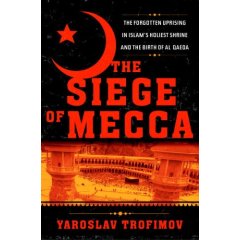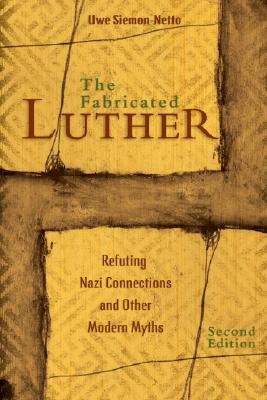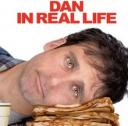 Aside from the fact that the title has a marvelously poetic rhythm to it, this is a thoroughly delightful classic children’s biography by an accomplished children’s author. Jean Fritz has written dozens of biographies and a number of very good works of historical fiction. Although its been in print for quite a while, this biography of Patrick Henry remains one of her best.
Aside from the fact that the title has a marvelously poetic rhythm to it, this is a thoroughly delightful classic children’s biography by an accomplished children’s author. Jean Fritz has written dozens of biographies and a number of very good works of historical fiction. Although its been in print for quite a while, this biography of Patrick Henry remains one of her best.
May 29th is Patrick Henry’s birthday and the “hook” on which she hangs her narrative. She begins by describing what life was like in Hannover County, Virginia in 1736, the year that Patrick was born (four years after the birth of George Washington). She describes his childhood (much time devoted to hunting, fishing, and exploring the wild Virginia forest), his education (taught at home by his father, who had a university degree), and tells some amusing anecdotes remembered by his friends (he was fond of dunking them in the creek by tipping over their canoe!).
Fritz describes Patrick’s improbable introduction to the practice of the law. As a young newlywed in his 20’s, he was helping his father-in-law run an Inn and Tavern. Most of their business came from the quarterly sessions of the county court which Patrick found a fascinating source of entertainment. At 24, he decided that he would like to try his hand at lawyering. This isn’t as improbable as it sounds. Henry was a serious intellect and once the subject of law caught his interest, he applied himself rigorously to mastering it. After “reading the law” for a year, he passed an oral examination by three lawyers in Williamsburg and was licensed to practice in the colonial courts.
Fritz then describes the first big case that established Henry’s reputation as a gifted orator and a legal mind to be reckoned with: the “Parson’s Case” of 1763. A group of Virginia parsons appealed a Virginia colonial law which converted the obligations of their parishioners from payment in tobacco to payment in cash. When the price of tobacco tripled, the Parsons felt they had been cheated and they appealed to the King of England. The King obliged them by vetoing the Virginia law and ordering the colonials to pay up. The Parsons then sued their parishioners for damages and back pay. Patrick Henry, age 27, took the case of the parishioners. Here’s Fritz’s description of what happened at the trial:
“Patrick Henry straightened up, he threw back his head, and sent his voice out in anger. How did the king know how much Virginians could pay their parsons? he asked. What right did he have to interfere? . . . The crowd sat transfixed . . . He talked for an hour. What about the parsons? he asked. Were they feeding the hungry and clothing the naked as the Scriptures told them to? No, he said. They were getting the king’s permission to grab the last hoecake from the honest farmer, to take the milk cow from the poor widow.”
The jury awarded the Parsons damages and back pay – but set the amount at one penny for each Parson.
Two years later, age 29, Patrick Henry was elected to the House of Burgesses, the legislature of the colony of Virginia. His first speech was a denunciation of King George and Parliament’s imposition of the Stamp Act – taxes on the colonies, imposed without their consultation or consent. He denounced the King in such strong language, that the king’s defenders rose to their feet and shouted, “Treason!” Patrick Henry’s reply was, “If this be treason, make the most of it!”
Ten years later, in 1775, age 39, Patrick Henry delivered his most famous speech. Henry had had enough of the King’s treatment of the colonists. He perceived correctly, that the King had already dispatched troops from England to force the colonists to pay the taxes he demanded.
“Gentlemen may cry peace, peace,” he thundered, “but there is no peace. . . Is life so dear or peace so sweet as to be purchased at the price of chains and slavery?” Patrick bowed his body and locked his hands together as if he, himself were in chains. Then suddenly he raised his chained hands over his head. “Forbid it, Almighty God!” he cried. “I know not what course others may take but as for me –” Patrick dropped his arms, threw back his body and strained against his imaginary chains until the tendons of his neck stood out like whipcords and the chains seemed to break. Then he raised his right hand in which he held an ivory letter opener. “As for me,” he cried, “give me Liberty or give me Death!” And he plunged the letter opener in such a way as it looked as if he were plunging it into his heart.”
Dramatic, no? The crowd went wild.
Virginians responded by electing Patrick Henry to be their governor for five consecutive terms. He was succeeded by Thomas Jefferson.
Patrick Henry went on to oppose ratification of the Federal Constitution in 1788 because it lacked a Bill of Rights.
He retired from politics in 1796 at the age of 60. I LOVE Fritz’s description of Henry’s life after politics:
“He lived just as he liked to live — knee-deep in dogs and children. Dorothea added eleven children to the family and, of course, by this time there were grandchildren too. Patrick encouraged all of them to go barefoot. He didn’t like to see children in shoes until they were six or seven years old and he believed that, if possible, they should avoid the inside of a schoolhouse until they were twelve. Nature, itself, was the best teacher, he said, and in his old age, as in his younger years, he took every opportunity to enjoy it. Come a nice spring day and Patrick Henry might be off to the wood, one child in the saddle before him and one behind. Or he might be walking down to the river, trailed by a string of children and dogs. Or he might be simply sitting in the shade of the huge old orange osage tree that spread its branches over most of the front lawn. He’d have some children with him, or course; his fiddle would be handy, and beside him would be a bucket of cool spring water with a gourd for drinking.”
This is a delightful book. A wonderful biography of a true American original. Patrick Henry, Virginia gentleman.
You can order the book directly from Greenleaf Press by clicking here.
-Rob Shearer,
Director, Schaeffer Study Center
Publisher, Greenleaf Press
 Here’s a fascinating story from The Independent about the Suffolk coastal city of Dunwich, which has disappeared beneath the waves of the North Atlantic. The city of Dunwich had several thousand inhabitants at the time of the Domesday Book (William the Conqueror‘s systematic census of the entire realm of England – conducted for taxation purposes!). It went into decline in the 14th century and was almost completely abandoned by 1750.
Here’s a fascinating story from The Independent about the Suffolk coastal city of Dunwich, which has disappeared beneath the waves of the North Atlantic. The city of Dunwich had several thousand inhabitants at the time of the Domesday Book (William the Conqueror‘s systematic census of the entire realm of England – conducted for taxation purposes!). It went into decline in the 14th century and was almost completely abandoned by 1750.




 The new Lincoln book is the one that came to my attention first. It was published in September of this year. Chuck Wills is an accomplished author and he does an excellent job outlining Lincoln’s life and political career in nine chapters. The text is interspersed with hundreds of photographs and shots of newspaper headlines and front pages. But what really sets this book apart is the inclusion of facsimile reproductions of original documents. About a dozen are included, each
The new Lincoln book is the one that came to my attention first. It was published in September of this year. Chuck Wills is an accomplished author and he does an excellent job outlining Lincoln’s life and political career in nine chapters. The text is interspersed with hundreds of photographs and shots of newspaper headlines and front pages. But what really sets this book apart is the inclusion of facsimile reproductions of original documents. About a dozen are included, each  on a tinted separate heavy-stock sheet slipped into a translucent pocket at the appropriate place in the books narrative. With the chapter discussing Lincoln’s boyhood and education, there is a reproduction of a page from his “sum book.” In the chapter on his marriage and young family, there is a reproduction of his marriage license to Mary Todd. In each case, holding an original document (even it is only a well-crafted facsimile) makes the historical account richer, nearer, more tangible and provokes a more visceral, emotional response. It makes Lincoln much more real, much less abstract. The text is written on an adult level (though certainly not too advanced for high school students), and many students will need some help in absorbing and understanding the historical documents, but I can’t think of a better way to introduce students to the raw materials of history and historical research. For anyone with a historical sense of who Lincoln was (and the text and photographs will give it to you), seeing a flyer for a play at Ford’s Theater on April 14, 1865 and then seeing the “wanted” poster issued in the manhunt for Lincoln’s assassins produces a profound effect. For anyone with an interest in Lincoln, I highly recommend this book – especially if your students have an interest in understanding how historians conduct their research. Note: 2008 will be the bicentennial of Lincoln’s birth. I know its a cliche to study Lincoln around President’s Day, but 2008 will be a special year. Here’s a list of the historical, facsimile documents included in the book:
on a tinted separate heavy-stock sheet slipped into a translucent pocket at the appropriate place in the books narrative. With the chapter discussing Lincoln’s boyhood and education, there is a reproduction of a page from his “sum book.” In the chapter on his marriage and young family, there is a reproduction of his marriage license to Mary Todd. In each case, holding an original document (even it is only a well-crafted facsimile) makes the historical account richer, nearer, more tangible and provokes a more visceral, emotional response. It makes Lincoln much more real, much less abstract. The text is written on an adult level (though certainly not too advanced for high school students), and many students will need some help in absorbing and understanding the historical documents, but I can’t think of a better way to introduce students to the raw materials of history and historical research. For anyone with a historical sense of who Lincoln was (and the text and photographs will give it to you), seeing a flyer for a play at Ford’s Theater on April 14, 1865 and then seeing the “wanted” poster issued in the manhunt for Lincoln’s assassins produces a profound effect. For anyone with an interest in Lincoln, I highly recommend this book – especially if your students have an interest in understanding how historians conduct their research. Note: 2008 will be the bicentennial of Lincoln’s birth. I know its a cliche to study Lincoln around President’s Day, but 2008 will be a special year. Here’s a list of the historical, facsimile documents included in the book: The second book of this type is
The second book of this type is  In
In 







